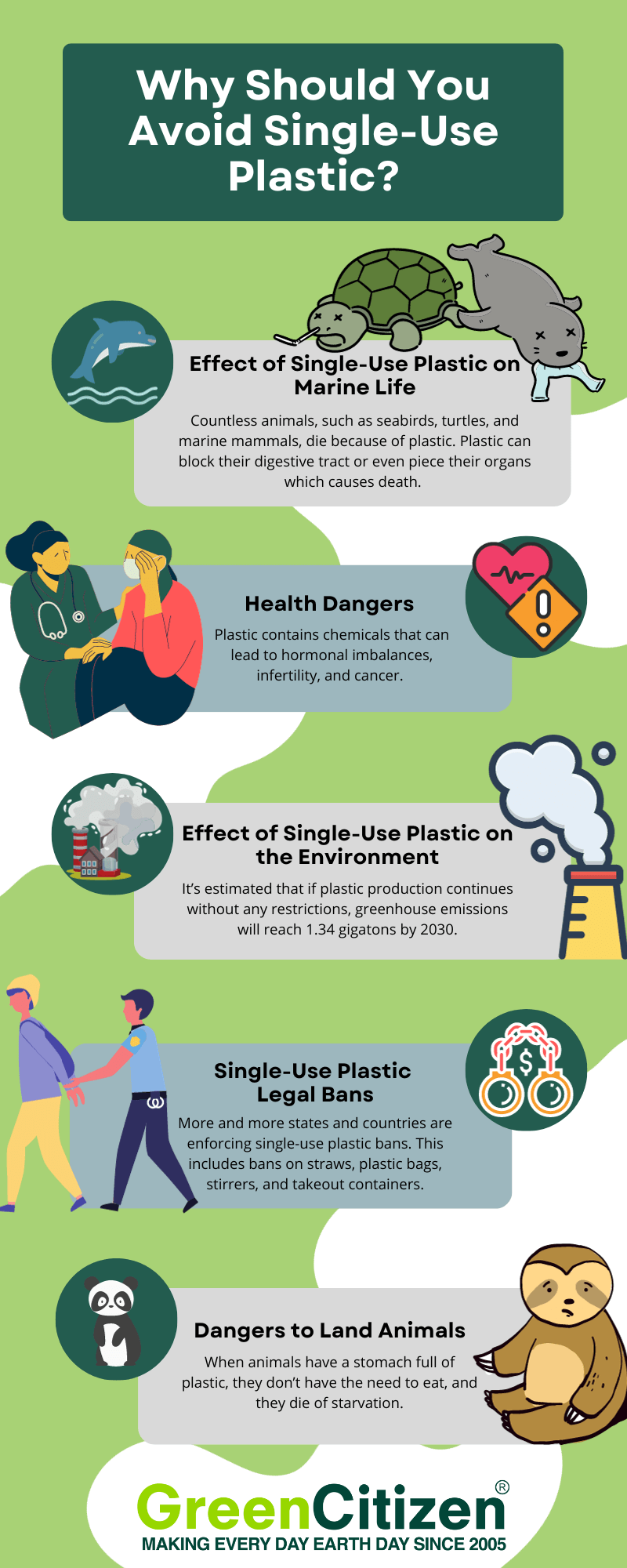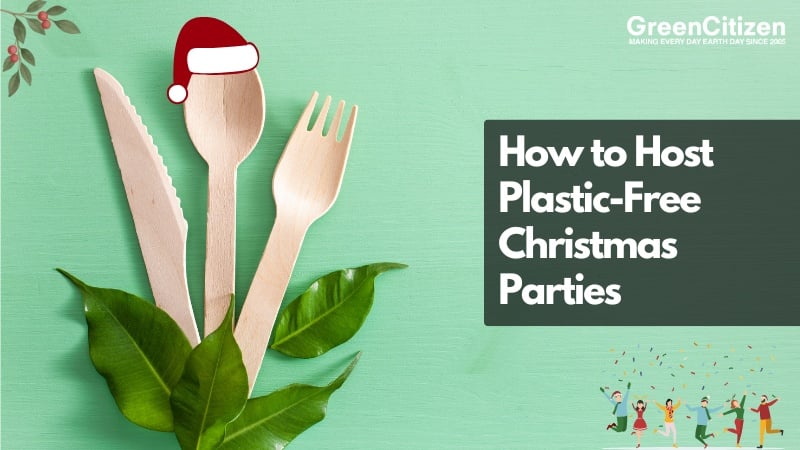At the start of this year, I set myself a challenge: to stop being only concerned about the environment and actually change how I live, celebrate and host.
It hasn’t always been easy. We live in a plastic-filled world. Since plastic was invented in 1907, it’s become so common that it’s hard to imagine life without it. But it’s also impossible to scroll social media or turn on the TV without seeing strangled turtles, entangled dolphins, and beaches covered in plastic.
With the holiday season here, my plastic-free mission naturally extended to Christmas gifts and celebrations. I’ve switched to solar decor and eco-friendly gifts — and now I’m hosting a Christmas parties without plastic cups and straws.
Here’s exactly how you can do the same.
Quick Answer – How to Host Christmas Parties Without Plastic Cups & Straws
To host Christmas parties without plastic cups and straws, swap disposables for reusable glass, stainless steel, ceramic or bamboo cups, offer reusable or compostable straws, avoid heavily packaged food, set up a washing or soaking station, and tell guests in advance that you’re hosting a low-waste, plastic-free Christmas parties.
✅ Plastic-free Christmas party checklist:
- Use glass, stainless steel, bamboo or ceramic cups instead of disposable plastic
- Offer reusable or compostable straws (or go straw-free)
- Avoid pre-packaged, plastic-heavy party food where possible
- Label cups so guests reuse the same one all night
- Set up a simple dishwashing / soaking station
- Choose plastic-free decorations & tableware
- Ask guests to bring a dish or container if it helps reduce packaging
- Explain on the invite that it’s a plastic-free Christmas celebration
Step-by-Step: How to Plan Plastic-Free Christmas Parties
Step 1 – Decide your plastic-free party rules
Start by deciding what “plastic-free” means for this party. For example:
- No single-use plastic cups, plates, cutlery or straws
- Avoid plastic decorations (balloons, plastic tinsel, plastic confetti)
- Minimize plastic packaging in food and drinks
Write your rules down; they’ll guide all your planning decisions.
Step 2 – Audit what you already own
Before you buy anything, shop your own home:
- Count your reusable cups, glasses, mugs and jars
- Check your plates, bowls, silverware and serving dishes
- Look for cloth napkins, tablecloths, and jars that can double as vases or candle holders
You might already own more “plastic-free Christmas party supplies” than you think.
Step 3 – Choose reusable cups, plates and cutlery
For most Christmas gatherings, you can avoid plastic cups and straws by mixing:
- Everyday glassware and mugs
- Stainless steel tumblers or cups
- Ceramic mugs and bowls
- Bamboo or wood plates and cutlery for kids or outdoor settings
Step 4 – Plan your drinks & straw alternatives
Think about:
- What drinks you’ll serve (punch, wine, cocktails, mocktails, hot chocolate, tea, coffee)
- What vessels they need (mugs for hot drinks, tumblers for cold, jars for cocktails)
- Who really needs straws (kids, guests with accessibility needs, certain cocktails)
Then choose straw alternatives (more on that below) and place them in a visible spot near your drink station.
Step 5 – Rethink food, packaging and leftovers
Pre-made party food often comes wrapped in layers of plastic.
To reduce this:
- Cook some dishes yourself using ingredients bought in minimal or recyclable packaging
- Ask guests to bring a dish in a reusable container
- If using caterers, ask if they can avoid single-use plastic where possible
- Serve food on reusable plates, boards and platters
For leftovers:
- Have glass jars, stainless steel containers or reusable silicone bags ready
- Encourage guests to bring their own containers to take food home
Step 6 – Set up cleaning & waste stations
A big objection to plastic-free Christmas parties is cleanup. Make it easier by planning ahead:
- Create a dish drop-off station near the kitchen
- Fill a tub or sink with warm, soapy water for soaking cups and plates
- Have a clearly labeled recycling bin and compost or food waste bin
- Ask one or two willing guests to help with dishes at the end
Modern dishwashers often use less water and energy than washing everything by hand, so don’t be afraid to load it up.
Step 7 – Communicate with guests & make it fun
As the host, you set the tone. Let guests know:
- This is a plastic-free Christmas party (or “low-waste” if you’re transitioning)
- You’re avoiding single-use plastic cups, plates and straws
- You’d love them to bring a reusable water bottle or cup if they’d like
You can even turn it into a conversation starter:
- Ask guests to share their own eco-friendly ideas
- Offer a small prize for the most creative plastic-free holiday tip
Plastic-free Christmas parties are becoming a trend, and your guests will likely remember yours long after the season is over.
What Can I Use Instead of Plastic Cups at a Party?
Instead of plastic cups at Christmas parties, use everyday glassware, mason jars, stainless steel tumblers, bamboo or wooden cups, and ceramic mugs.
For kids or outdoor gatherings, choose lightweight, unbreakable options like stainless steel or bamboo, and label each cup so guests reuse the same one all night.
Glass
Glass cups and jars are one of the best plastic alternatives:
- Made from silica (sand) instead of fossil fuels
- Endlessly recyclable when properly processed
- Look festive and can be dressed up with garnishes or tags
While glass takes energy to manufacture, reusing it even a few times quickly beats single-use plastic. Glass doesn’t absorb smells or flavors and doesn’t leach chemicals into drinks.
Stainless steel
Stainless steel cups and bottles are durable, lightweight and party-proof:
- Great for beer pong, casual drinks and outdoor celebrations
- Don’t leach toxic chemicals into food or drink
- Can keep drinks cold or hot for hours (depending on design)
Look for food-grade stainless steel labeled 18/8 or 18/10 — these are higher-quality options that resist rust and are easy to clean.
Ceramic
Ceramic mugs and cups are perfect for cozy, festive drinks:
- Ideal for hot chocolate, mulled wine, tea and coffee
- Extremely reusable and long-lasting
- Often beautifully colored, doubling as party decor
Just make sure the glaze and paint are non-toxic and free from lead or cadmium.
Bamboo
Bamboo is a fast-growing, highly renewable material:
- Grows quickly and can be harvested every few years
- Doesn’t require heavy pesticides or fertilizers
- Is compostable and biodegradable under the right conditions
Bamboo cups, plates and cutlery are especially handy if you don’t have enough silverware or if children are attending. They’re lighter and less breakable than glass or ceramic.
Wood
Wood is another natural plastic alternative:
- Biodegradable and non-toxic
- Has natural antibacterial properties
- Works well for serving boards, spoons and utensils
However, wood is less renewable than bamboo and usually grows more slowly, so if you’re choosing between wood and bamboo, bamboo often wins for sustainability.
Hemp & bioplastics
Hemp (cannabis sativa) is a versatile plant that can be turned into bioplastics:
- Grows quickly and can be harvested multiple times a year
- Requires minimal pesticides or fertilizers
- Creates lightweight, biodegradable materials
Hemp-based or other plant-based bioplastics can replace some oil-based plastics, but always check whether they’re compostable, and if so, whether they require industrial composting.
What Can I Use Instead of Plastic Straws?
To replace plastic straws at your Christmas parties, offer stainless steel, bamboo, glass, or compostable paper straws, or skip straws entirely. Keep a small stash of softer or flexible options for kids and guests with accessibility needs.
Good options include:
- Stainless steel straws – durable, reusable, often come with cleaning brushes
- Bamboo straws – natural, lightweight and compostable
- Glass straws – elegant and reusable, better for adults than kids
- Paper straws – compostable and widely available, best for shorter events
- Edible straws – such as pasta or flavored options, fun and quirky
- No straw – many drinks simply don’t need one
Place a clearly labeled jar of reusable straws near your drink station and encourage guests to use one per person.
Why Should You Avoid Single-Use Plastic Cups and Straws?
Single-use plastic cups and straws are designed to be used for minutes but last for centuries. They contribute to ocean pollution, harm wildlife, add microplastics to our bodies and release greenhouse gases throughout their life cycle.
Choosing reusable alternatives is one of the simplest ways to shrink your party’s environmental footprint.

How Does Single-Use Plastic Affect Marine Life?
It’s estimated that by 2050 our oceans will have more plastic than fish. Between 4.8 to 12.7 million metric tons of plastic ends up in the oceans yearly.
Countless animals, such as seabirds, turtles, and marine mammals, die because of plastic. Many of these animals are found with plastic in their stomachs. Plastic can block their digestive tract or even piece their organs which causes death.
When animals have a stomach full of plastic, they don’t have the need to eat, and they die of starvation. Also, many sea animals mistake plastic for food.
It’s estimated that about 700 species are affected in some way by plastic, which also includes endangered species.
100 billion single-use cups are disposed of every year globally. The USA uses half a billion straws a day, most of which end up in the ocean.
How Does Single-Use Plastic Affect Human Health?
91% of all plastic isn’t recycled, but it ends up in landfills, or even worse, in the environment.
Single-use plastic is traditionally especially hard to recycle. Items such as straws and cutlery fall into crevices of recycling machines, and many recycling centers won’t even accept them.
When they are sent to the landfill or left in the environment, plastic doesn’t break down, but it breaks up due to sun and heat. It becomes microplastic which isn’t longer than 5 millimeters, and it’s extremely hard to detect.
These microplastic end up everywhere — in our water, land, and our bodies.
Wildlife eats microplastics, which accumulates in their bodies and causes intestinal blockages or punctured organs.
Microplastic is also harmful to the health of humans. Plastic contains chemicals that can lead to hormonal imbalances, infertility, and cancer.
How Does Single-Use Plastic Affect the Climate?
Single-use plastic isn’t detrimental only to the people and the wildlife, but it also negatively affects the climate during production and degradation.
The production of plastic contributes to greenhouse gas emissions during each point in its life cycle. Plastic source materials are oil and gas, and drilling for them leads to methane leaking, deforestation, and clearing of wetlands.
It’s estimated that if plastic production continues without any restrictions, greenhouse emissions will reach 1.34 gigatons by 2030.
This is equal to adding 300 new coal power plants.
When single-use plastic breaks down in the environment, it produces methane and ethylene.
Greenhouse gas emissions account for 3.8% of global greenhouse gas emissions.
40 billion single-use plastic utensils are manufactured and used every year, which don’t end up recycled.
Are Single-Use Plastics Being Banned?
More and more states and countries are enforcing single-use plastic bans. This includes bans on straws, plastic bags, stirrers, and takeout containers.
California was the first state to ban single-use plastic bags in retail stores, and this reduced usage of plastic bags by 85%.
Since then, seven other states have enforced the ban as well.
This is happening around the globe as well.
India banned single-use plastic in 2022 too.
Bans prevent millions of tons of plastic from going into the waste stream and considering plastic lasts forever, every single ton counts. Plastic bans also reduce plastic production, which directly influences climate change for the better.
Beyond these, there are cultural effects. Large companies (which are among the biggest single-use plastic advocates) are forced to rethink their plastic use and come up with eco-friendly ideas.
This directly influences customers’ mindset and leads to a collective awareness of how harmful plastic use is.
Is It Really a Host’s Responsibility to Avoid Plastic?
As a host, you set the tone. You choose the decorations, tableware, food and drinks. Guests usually have limited control over whether a party is wasteful or sustainable — they simply show up.
By planning plastic-free or low-waste Christmas parties, you can:
- Make guests with eco-conscious or zero-waste lifestyles feel more comfortable
- Gently educate and inspire others without lecturing
- Create a party that stands out from the usual disposable-heavy gatherings
- Potentially save money by reusing what you already have
- Enjoy a faster cleanup when you have a clear system for reusables
Most importantly, you help ensure your grandchildren aren’t stuck living with the waste from today’s celebrations.
Common Party Items You Can Swap for Sustainable Alternatives
A party of 30 people can easily go through around 100 single-use plastic items. That’s just one party. Multiply that by every Christmas party in your city and the numbers become staggering.
Here are common plastic items you can switch:
- Plastic cups → glass, stainless steel, ceramic, bamboo
- Single-use cutlery → silverware, bamboo or wood cutlery
- Disposable straws → stainless, bamboo, glass or paper straws
- Disposable paper plates with plastic lining → reusable plates, bamboo plates or rental tableware
- Plastic decorations → fabric bunting, paper garlands, real greenery, reusable ornaments
- Food packaging → home-cooked dishes, bulk ingredients, caterers who minimize packaging
- Plastic bags for shopping → reusable cloth or jute bags
- Plastic leftover containers → glass jars, stainless containers, guests’ own containers
- Plastic water bottles → jugs of tap water, glass carafes, filtered water dispensers
Material Comparison for Party Cups (Quick Guide)
| Material | Best For | Pros | Cons |
|---|---|---|---|
| Glass | Indoor adults’ parties | Reusable, recyclable, non-toxic, elegant | Breakable, heavier |
| Stainless steel | Indoor & outdoor, adults & kids | Durable, lightweight, keeps drinks cold/hot | Not transparent, higher upfront cost |
| Ceramic | Hot drinks, cozy Christmas settings | Great for hot drinks, decorative | Breakable, heavier |
| Bamboo | Kids, casual or outdoor gatherings | Lightweight, compostable in right settings | Shorter lifespan, not for very hot drinks |
| Wood | Utensils, boards, some cups | Natural look, biodegradable | Needs more care, less renewable than bamboo |

Read More:
Enjoy Guilt(And Plastic)-Free Christmas Parties
Christmas is one of the most wonderful, and most wasteful, times of the year. Hosting plastic-free Christmas parties is a simple, joyful way to give a gift back to the planet.
By swapping plastic cups and straws for reusable alternatives, rethinking packaging, and inviting your guests into your low-waste experiment, you’ll throw a party that feels just as festive — and a lot more future-friendly.
You’d be surprised at how many plastic alternatives are out there, from solar decorations to eco-friendly gifts and zero-waste party supplies. Start with this year’s celebration, and let it be the first of many plastic-free Christmases.

